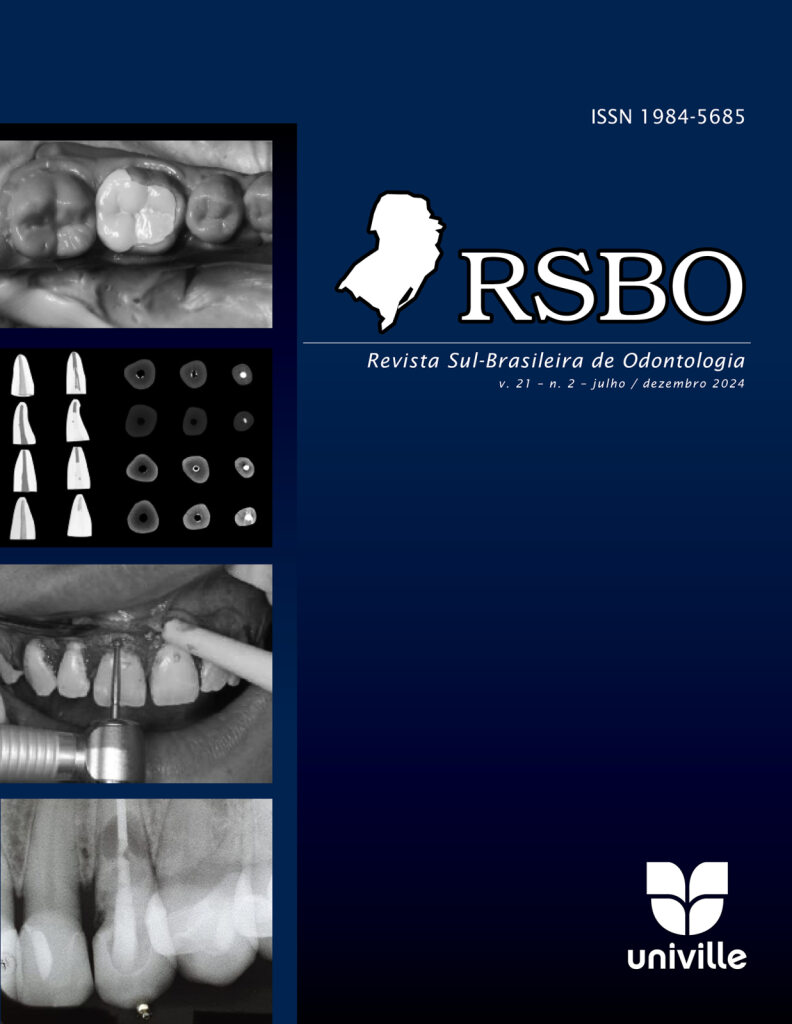Successful dental treatment using case for carpule as a distraction technique during local anesthesia: a case report
DOI:
https://doi.org/10.21726/rsbo.v21i2.2542Palavras-chave:
local anesthesia; visual distraction; child management; dental anxiety.Resumo
Dental anxiety is described as a feeling of apprehension followed by some fear that something might happen during dental treatment, and most of the time it is also accompanied by fear. During pediatric dental care, dental anxiety is common and can be controlled through behavioral management of the child, using traditional techniques such as “tell-show-do”, cards, videos, music, imitation, voice control and distraction. Objective: To report a clinical case of a child with Down’s Syndrome and a negative history of previous dental treatment, in which behavioral management was successfuly carried out with the distraction technique, using a case in the carpule syringe. Case report: The guardian of a child 7-year[1]old male patient with Down’s Syndrome and a negative history of previous dental treatment sought for dental treatmant. During the interview, the guardian reported the child’s negative experience due to the drastic use of restraint measures. The clinical examination revealed the presence of biofilm, active caries and an indication for extractions. As the child was resistant to treatment, behavioral management sessions were carried out. Due to the various needs for more invasive procedures, preparation for anesthesia was carried out. For this stage, an alligator-type visual distraction device was used, which acts as a cover for the carpule syringe. After correct management, the child was more receptive to treatment, which was carried out without the need for drastic physical restraint measures. Conclusion: The use of the case to camouflage the carpule proved to be effective as a behavioral management technique in improving the child’s behavior, reducing fear and decreasing anxiety.

